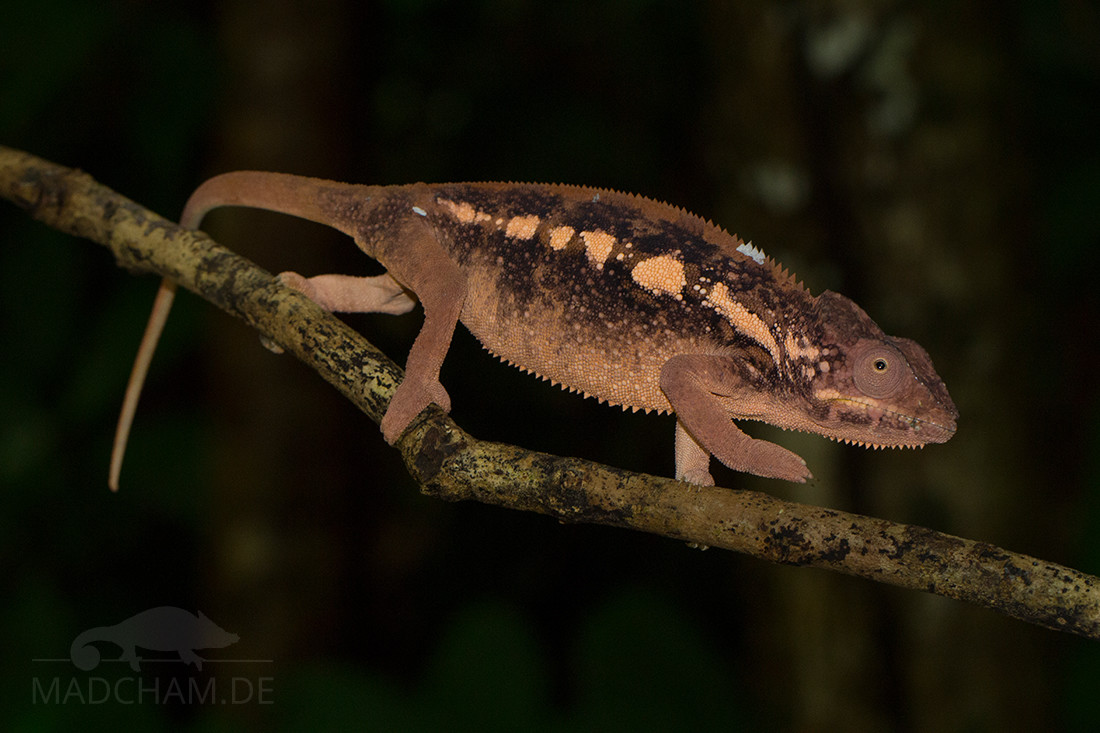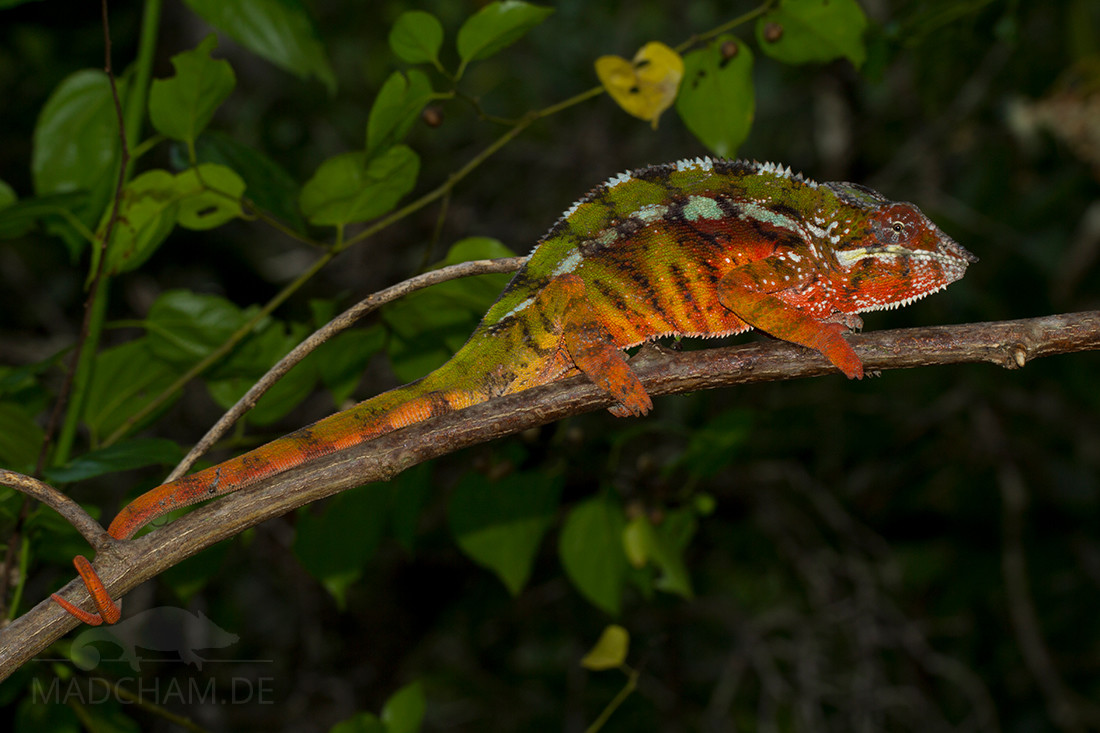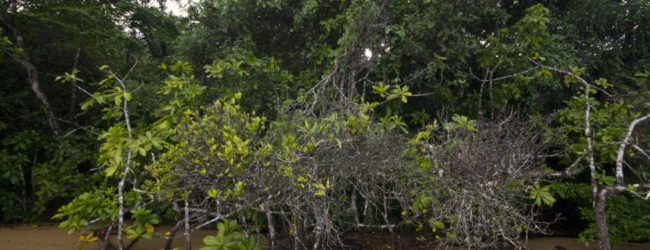Distribution of the local form Nosy Mangabe:
Nosy Mangabe (translated as “very beautiful island”) is an island with a size of 5,2 km² that is situated a few kilometers southeast of Maroantsetra in Antongil Bay. You can reach it from Maroantsetra by boat in less than half an hour. The island is a special reserve for Aye-Ayes and part of Masoala national park, which is located vis-à-vis. It is completely covered by rainforest, but the west side has a nice golden-colored beach. Due to its remote location, only very few travelers visit this island, and we are some of the hand full of people that stay overnight there every year.
Appearance of this local form:
As an island form, a very color-faithful local form has developed here, which shows only little variation in itself. The males are quasi “divided in two” on the whole body: They carry green colors on the body above the white lateral stripe, below the lateral stripe they are red. The bridge of the nose and helmet is green, and the throat pouch and eyelids are red. In adult males, the banding on the body, which other local forms show clearly, is only faintly visible or somewhat more obvious when excited.
Weight table

Gewicht = weight in grams, Kopf-Rumpf-Länge = snout-vent-length in cm, Weibchen = females, Männchen = males
Since 2015, we have been measuring the weights of chameleons found by us in Madagascar, as far as the animals (and our scales) participate. In the long term, we aim to obtain an average weight in relation to snout-vent-length (measured from the tip of the nose to the cloaca) for each species from as many measurements as possible. It is important to know that all weights were measured towards the end of the rainy season (= best food supply), so these should be maximum weights on Madagascar. Triangular symbols in females mean not pregnant, round symbols mean pregnant. In Furcifer pardalis, contrary to our original assumption, it has so far turned out that there are no serious differences in the ratio of SVL to weight between the individual local forms.
| Jan | Feb | Mar | Apr | May | Jun | Jul | Aug | Sep | Oct | Nov | Dec | |
| Average temperature | 24 | 25 | 24 | 24 | 23 | 21 | 20 | 20 | 21 | 22 | 23 | 24 |
| Minimum temperature | 20 | 21 | 20 | 20 | 18 | 17 | 16 | 16 | 17 | 17 | 19 | 20 |
| Maximum temperature | 28 | 29 | 28 | 28 | 27 | 25 | 25 | 25 | 25 | 27 | 27 | 28 |
| Rain days | 26 | 23 | 25 | 19 | 17 | 18 | 21 | 21 | 16 | 17 | 20 | 24 |
We have collected the data given above over several years with thermometers and hygrometers at the finding places of the chameleons. "Average temperature" means that values of a whole month have been calculated to one average value per month. For example all measured minimum temperature values of February have been calculated to one average minimum temperature for February. In plain language, this means single peak values of a day may be a little higher or lower than the average minimum and maximum temperatures. It is possible that a location has an average maximum temperature of 29°C, but one day during that month it had 33°C or even 35°C there.
Climate on Nosy Mangabe is a very humid place. It is raining all year long with especially intense precipitation during rainy season. The rainforest of this island reaches right to the edge of the beach, and is an old forest with many huge trees and much undergrowth.
Temperatures on Nosy Mangabe are rather constant all over the year with few variation. Temperatures during daytime reach 25°C, in rainy season they might be around 30°C. Instead dry season has cooler temperatures, but only few °C less: It is still warm with around 25°C during the day. At night, temperature drops only few degrees.

We have measured UVB data with a Solarmeter 6.5 in spring (end of March) at the peak of activity of chameleons in Madagascar. We always measured the values that a chameleon could maximally reach in its habitat.
Habitat:
The easiest way to find panther chameleons on Nosy Mangabe is to walk along the beach during low tide. They can often be found exposed on low branches in the trees hanging over the beach. The whole ground of the island is sandy and except the beach everywhere covered with lots of foliage. The rainforest is dense, old and lush. Lianas thick as arms can be found all around the island. Some bamboo groves exist, but panther chameleons avoid these. Some streams run through the area and there are some rocky parts.





























